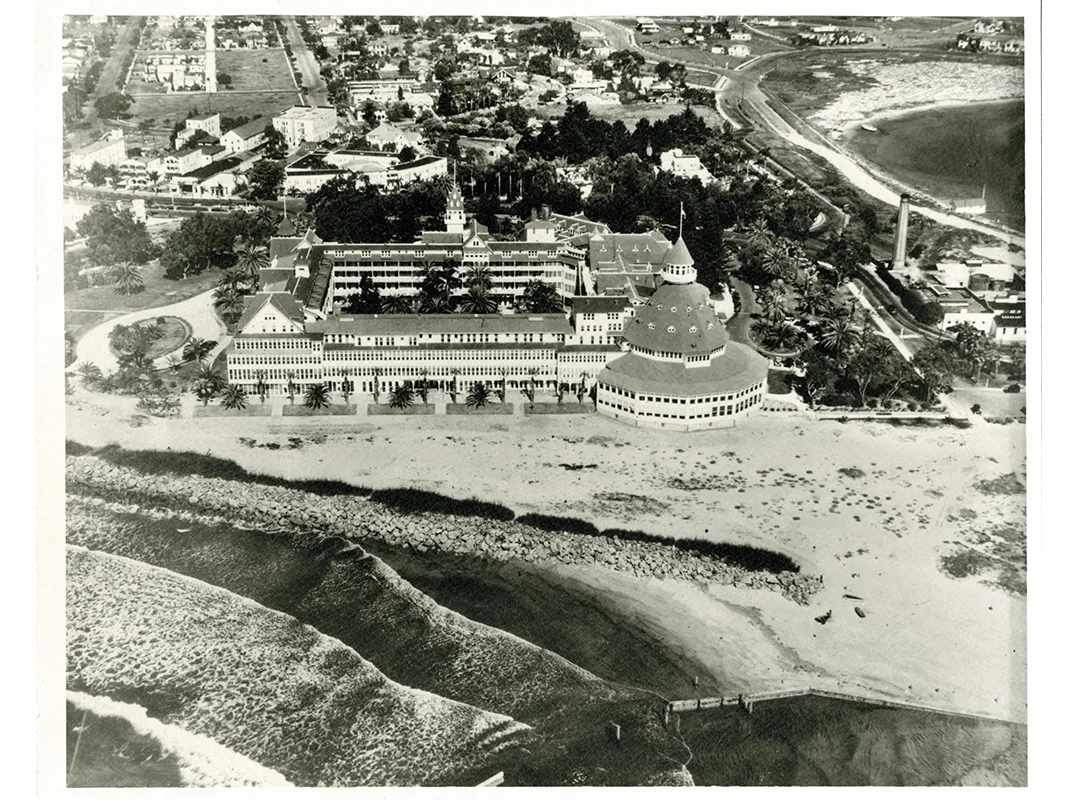I Was Almost Killed By a Navy Jet on a San Diego Beach
In 1954, a pilotless F7U-3 Cutlass nearly wiped out a crowd of beachgoers.
/https://tf-cmsv2-smithsonianmag-media.s3.amazonaws.com/filer/c1/63/c16371d9-c1f1-4065-8bc9-840165c0d5de/17b_fm2017_cutlassinclouds_live-wr.jpg)
One beautiful southern California afternoon in the summer of 1954, I watched a Navy F7U-3 Cutlass jet fighter as it cruised over the beach at Coronado and headed out to sea. And then I saw the canopy fly off and the ejection seat fire, expelling the pilot.
My friend and Coronado High School classmate Jim Worthington and I stared at the sky in disbelief, watching as the parachute inflated. Just a moment after the pilot landed in the water, a Coast Guard helicopter appeared and retrieved him via a sling.
Then we saw his aircraft drift into a turn and assume a new course—straight for us, and for the throngs of others on the beach that day.
The lifeguards on duty were Russ Elwell and Tom Carlin, a few years older than us. Russ hopped into the lifeguard service’s rescue jeep and began driving along the beach, honking the horn and warning visitors to keep away from the water. He couldn’t order them to evacuate; there were hundreds of people along the mile-long, 200-yard-wide strip of sand, and the aircraft was descending fast.
We had all grown up together in Coronado, home of Naval Air Station North Island, “the Birthplace of Naval Aviation.” We were used to seeing fighters of all kinds, both propeller and jet. And now we were watching this odd-looking state-of-the-art combat aircraft become a mortal threat to us all.
With its nose trimmed high, the jet made a pass parallel to the surf line right over our heads and headed back seaward, continuing its downward spiral. As it made another descending arc, the swimmers and surfers began scrambling out of the water. But by this point it was no longer clear there was a safe place we could reach before the jet came down.
We watched as another Cutlass, a Grumman F9F-6 Cougar, and a Lockheed T2V SeaStar approached the unpiloted aircraft and circled it, attempting to “steer” it with their jet blasts.
In the cockpit of the second Cutlass was Lieutenant Don Christianson, who had launched with Lieutenant Floyd C. Nugent, the pilot who ejected, from the USS Hancock, 100 miles off shore. The Cougar and the SeaStar, I later learned, had been launched from North Island.
Nugent’s Cutlass was armed with two 2,000-pound bombs, one under each wing, and two rocket pods. The tower of the Hancock had told Nugent that during the catapult shot, he had lost his left main landing gear and the bomb under the left wing. The Hancock ordered him to circle over North Island to burn off fuel, then head out to sea and eject.
On its fourth pass, the pilotless Cutlass, now so low that the noise was deafening, arced over the historic beachfront Hotel del Coronado. (In a later statement, Lieutenant Commander L.R. Pierson estimated that on its final pass over the beach, the aircraft had descended to 150 feet.) Just before flying into the hotel, the Cutlass turned right and made a surprisingly graceful landing in the blue Pacific about 300 yards from shore, kicking up a huge spray of water as if it were a seaplane. It floated for a moment, then began to sink.
We all wanted to paddle out there and check it out. Chuck Quinn, one of the lifeguards and a world-class swimmer and surfer, was especially determined to get a close look at the sinking aircraft. But Navy frogmen were already in the water, and they turned him back.
The entire episode had lasted about 30 minutes, but we spent the rest of the day talking about it. We stayed on the beach to watch a Navy barge with a crane haul the Cutlass up from the bottom. They took it to North Island, about a mile away.
In the ensuing years, we discussed this strange event long after we’d finished high school and then college. We thought it strange that the Coronado Journal and the San Diego Union-Tribune did not have much coverage of the crash at the time. It was like the Navy wanted to forget about it.

Part of the reason became clear to me more than 60 years later. Last summer, my friend Logan Jenkins, a columnist for the San Diego Union-Tribune, took an interest in the weird Cutlass flight. I recounted the events of that day in July 1954 for him just as I have told them here.
Logan discovered that a similar (but much more widely reported) incident had occurred four months earlier, in March 1954, not far from the site of the Cutlass episode. In the earlier instance, a Navy F9F-6 pilot had to eject about 20 miles out to sea from Coronado and San Diego. The Cougar he’d been flying did the very same thing I’d seen the Cutlass do four months later, turning back toward the shore, this time headed for downtown San Diego.
In that case, Lieutenant Junior Grade C.W. Vandenberg had flown out to intercept the Cougar, positioning the tip of his left wing beneath the right wing of the pilotless Cougar. By performing this risky maneuver on both sides of the Cougar, he directed airflow against the Cougar’s wings to “steer” it back over the ocean, where it ultimately crashed.
The fact that two similar episodes occurred in almost the same location just four months apart led to confusion as the decades wore on: Later accounts sometimes conflated the two runaway Navy jet stories, or transposed the names of the pilots involved.
Vandenberg’s heroic flight made the front page of the Union-Tribune and the Los Angeles Times. The mayors of Coronado and San Diego gave him the keys to their cities.
Christianson, the pilot who’d tried to direct the Cutlass back out to sea, received no such acclaim, perhaps because his attempt to wrangle a runaway aircraft, while no less noble, was less successful.
By his own account, he and the SeaStar and Cougar pilots “tried to steer [the pilotless Cutlass] away from the San Diego area, but at 95–100 knots, none of us could slow down with it. I could momentarily move the wing to change the turn but five or 10 knots difference in my speed and that of [the Cutlass] made steering it impossible. It made four orbits starting at 7,200 [feet] and hit in the water about 300 yards off the beach from Southern Coronado.”
The malfunction during Nugent’s catapult launch turned out to be a failed securing nut on the oleo strut of the left main gear. The Cutlass had always been a troublesome aircraft for the Navy (see “The Gutless Cutlass,” Aug. 2013). Several of them had crashed before Nugent’s flight, and more would after, resulting in several fatalities. It earned the nickname “Gutless Cutlass” for its dangerously underpowered engines. The Navy lost confidence in the airplane after several crashes on aircraft carriers, one of them aboard the USS Hancock about a year after the episode I witnessed. In 1959, the Navy finally canceled the Cutlass program.
While that was surely a just fate for so troublesome an aircraft, it’s unfortunate that Christianson was never honored for his service that day. Whether he believed he had succeeded in nudging the Cutlass seaward or not, to all who witnessed that long-ago episode, he was a hero.
